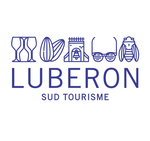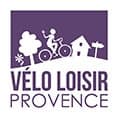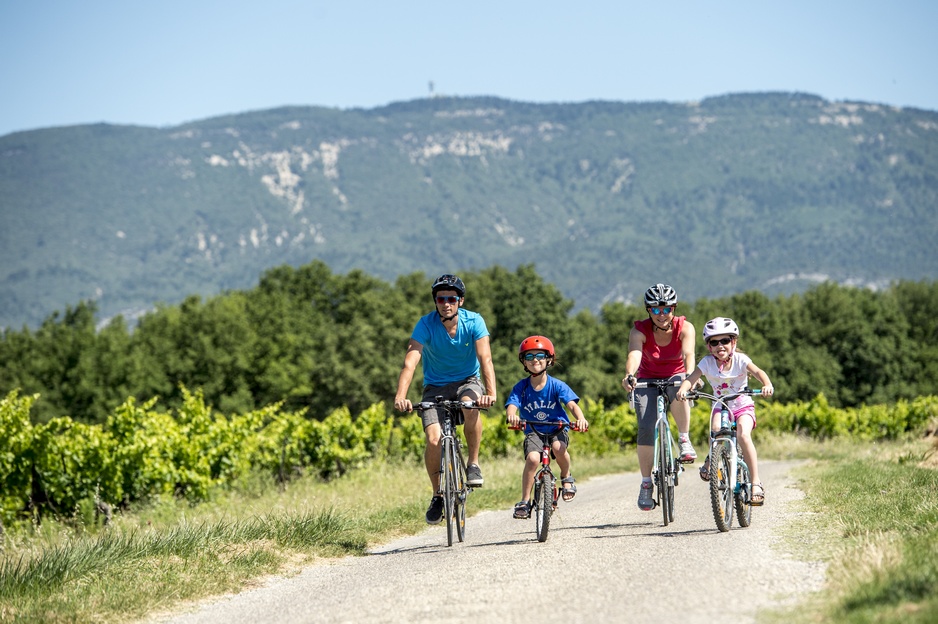
On the country of Aigues by bike (East)
"The villages, huddled in the Luberon's hollow or perched like lighthouses with shaded squares and fountains, will oblige you to raise your head to look fully at these unforgettable beauties, while the tourist providersmarked "Acceuil Vélo" will welcome all cyclists to a cool and restful stopover. Do not hesitate anymore and follow the small picturesque and serene roads. Let yourself be charmed: it's a real treat! " Loïc Munier, organizer for Vélo Loisir Provence.
17 points of interest
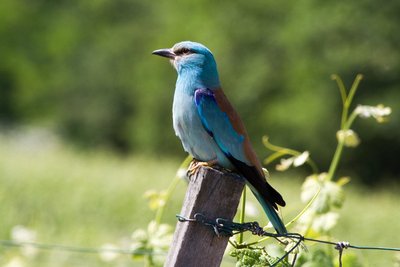
Rollier d'Europe - ©DR-A. Rocha France  Fauna
FaunaThe European Roller, the blue bird
Easy to spot thanks to its intense blue color, it can be seen on utility poles. It enjoys this vantage point in an open and sunny area to locate and dive down on its prey (large insects and lizards). It nests in tree cavities and leaves to spend winter in Africa when prey becomes rare, before returning in the spring.
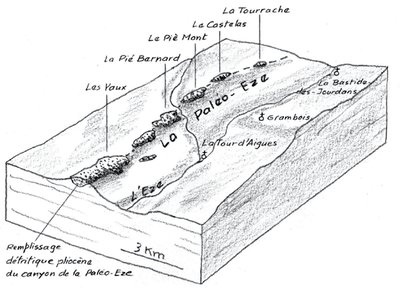
Remplissage de la paléo-Eze - extrait de « De la Durance aux monts de Vaucluse » G. Bronner, Ed. Jeanne Laffitte  Geology
GeologyPié Mont and Paléo-Eze
Between Pertuis and Peypin-d'Aigues, in several places, you can see an accumulation of pebbles, pieces of rock torn from the mountains and slowly worn, rounded by their transport in a stream, a river. These pebbles correspond to the former course of a stream, a paleo-Eze flowing there, parallel to the current Eze but shifted 3 km to the east. We can also notice this ancient fossil valley across the landscape forming hills.

Marché Paysan du Luberon - ©Hervé Vincent  Produits du terroir
Produits du terroirThe Farmer Markets
For lovers of Provençal flavors: on this great place, the brand "Marché Paysan" has been deposited by the Luberon Regional Nature Park. The goat cheeses are local productions, the fruits and vegetables are from the field "next door" and the honey has just been harvested. In these exhilarating markets, merchants are exclusively producers of the Park selling their own products (St-Martin-de-la-Brasque market on Sundays from May to October).
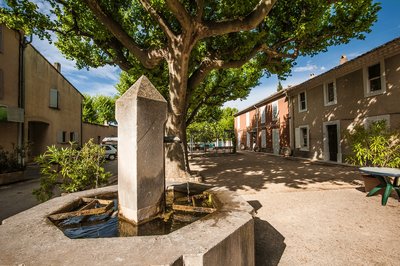
Saint-Martin-de-la-Brasque - ©JP-Villegas - Luberon Sud Tourisme  Patrimony and history
Patrimony and historySaint-Martin-de-la-Brasque
The village was built in 1506, and like Peypin-d'Aigues, it originated from an agreement between the lords and about fifteen Vaudoise families who agreed to come and repopulate fallow lands. The two villages complement each other: Peypin having a surplus of forests, and Saint-Martin of cultivable lands. During the persecutions of 1545, the village was looted and burned. St. Martin was one of the towns mentioned in the Edict of Merindol of May 20, 1545: It was enough to be a native of it to be sent to the galleys.

Eglise Saint Martin de Tour - ©JP-Villegas - Luberon Sud Tourisme  Patrimony and history
Patrimony and historyParish Church of St. Martin
This religious building was built between 1626 and 1929 to replace the old ruined church, dedicated to Saint-Martin-de-Tours. Its small size and its remoteness from the village can be explained by too few Catholic families. The majority of the population being from the Canton of Vaud. Inside, the altarpiece dates back to the 18th century. The pointed barrel vault nave, terminated by a semi dome apse, makes it a building of unique architecture.
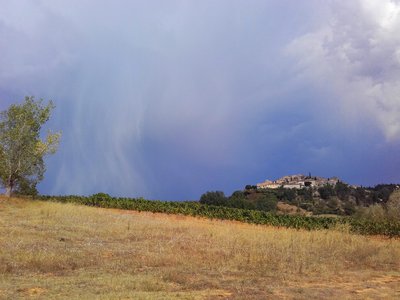
Grambois - ©Eric Garnier - PNR Luberon  Panorama
PanoramaLandscape of Grambois
This typical village perched 350 meters up a steep hill has developed thanks to several factors offering an advantageous position. At the crossroads of Pertuis-Forcalquier-axes and Lauris Manosque, on top of a hill to dominate the valley of Eze and that relates to the plateau of Saint-Léger, a very fertile territory, but extensive and varied, combining funds moist valleys to some well-exposed slopes and broad course of forest pastures.

Coing du verger villageois - ©Jean-Pierre Talichet - PNR Luberon  Flora
FloraConservatory orchard
The village of Grambois orchard is set at the foot of the village, a scenic grounds with a restored loft. It is maintained jointly by the municipality, and Gramboisiens Gramboisiennes and the Regional Park of Luberon. This orchard helps perpetuate the culture of old varieties of fruit and gather a collection of 91 traditional varieties of the Luberon and Provence. A beautiful fruit heritage conservation!

La fontaine aux Bartavelles - Séverine Besson - OT Luberon Côté Sud  Patrimony and history
Patrimony and historyThe village of Grambois
On the square ramparts coexist several monuments such as the castle (stately home of the sixteenth century.), Notre-Dame de Beauvoir eleventh century. and the Fountain of Bartavelles, a real movie set has selected Yves Robert for his films. The village also has two sources bucolic character: Fontsausse and Fontvérane. Formerly necessary for life in the village, the roads serving them have kept track of their importance by taking their names.
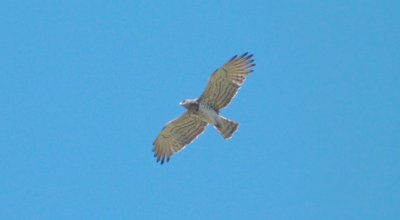
Jean-le-Blanc en vol stationnaire - ©Alexis Maury Dalmazane - PNR Luberon  Fauna
FaunaThe short-toed snake eagle
Unique among our European birds of prey, this forest nesting species hunts reptiles (snakes and large lizards) by sight in open environments (garrigues, stones, fields, vines). It is a great migrant and spends the winter in the South of the Sahara desert. 1.80 meters wingspan, white belly, brown chest and flying characteristic, the short-toed snake eagle is easily noticeable if you pay attention. Here from March to September, this original raptor is a key element of our natural heritage.
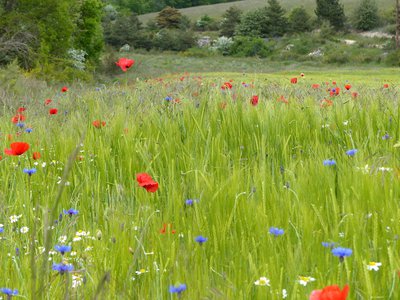
Coquelicots et bleuets - ©Laurent Michel - PNR Luberon  Flora
FloraCamaieu of red or blue, who am I...?
From the end of spring, the "harvest flowers", known as messicole plants, give these colors to the Provencal fields that captivated Van Gogh so much. But the evolution of agriculture has led to the scarcity of these plants, biologically adapted to the open and disturbed (but untreated) environments that are cultivated lands. Thanks to the maintenance of a quality agricultural soil, adonis, cornflowers and large Venus's-looking-glass survive on the territory of the Park, for your viewing pleasure.

Lapin de garenne - ©DR  Fauna
FaunaFire can be good!
In 1992, a fire devastated 1,800 ha of forest and garrigue from Grambois to Beaumont-de-Pertuis. This sad event had a rare positive effect: The reopening of environments in the heart of the massif. This allowed species such as wild rabbits or certain passerines to regain their rights. At the same time, in order to perpetuate a large cut within the massif, which is essential in the strategy of fighting fires, a vast area grazed by the sheep has been restored.
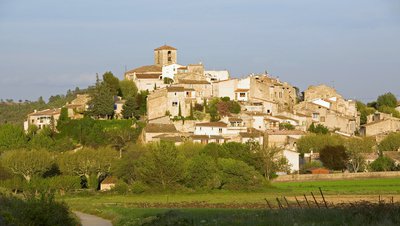
Le village de Beaumont-de-Pertuis - ©Camille Moirenc  Patrimony and history
Patrimony and historyThe hidden face of Beaumont-de-Pertuis
The construction of this village seems simple, a hillock (where the old demolished castle was located until 1970) surrounded by three rings in the shape of an ellipse. But Beaumont has an important and extraordinary underground heritage, each house is built on basements from the 13th century, or before. Some of modest size were used for the preservation of cheese, but others were buried real "gothic cathedrals" (private domain, impossible to visit).
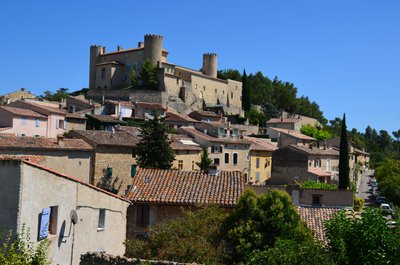
Village de Mirabeau - ©Ludovic Laffitte - Luberon Sud Tourisme  Patrimony and history
Patrimony and historyThe village of Mirabeau
Since the Middle Ages, Mirabeau has benefited from a strategic position, thanks to its clue, a privileged passage to cross the Durance, allowing inhabitants to control the flow of people and goods. In the 16th century, a ferry was installed with the instatement of a right of passage, which allowed the village to prosper around its castle built in the 17th century. In the 15th century, the Mirabeau bridge was built, destroyed four times by the Durance but always rebuilt for its lucrative advantage.

Pylône et lignes électriques - ©DR  Fauna
FaunaPower lines, air threats
High and medium voltage lines create a real danger for birds’ due to collisions and electrocutions. For large soaring birds (eagles, vultures, storks), these infrastructures represent one of the main causes of human-induced mortality. Solutions exist: The burying of power lines, the installation of beacons improving the visibility of the cables, the renewal of the most dangerous pylons, the creation of perches on them or their better isolation.
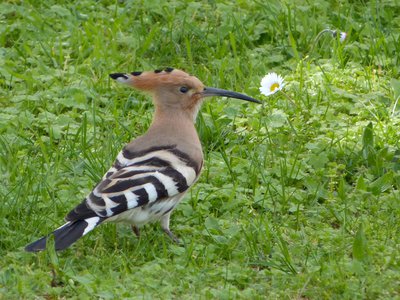
Une huppe fasciée - ©Alexis Maury Dalmazane - PNR Luberon  Fauna
FaunaHoopoe
Despite its pretty crest that can be fan-shaped, the hoopoe is more often heard than seen, thanks to its easily recognizable song "houp-houp-houp". This insectivorous species uses its long-curved beak to extract larvae and cocoons from the soil. It frequents cultivated areas, vineyards, orchards or olive groves. Protected in France since 1981, this great migrant spends winter in Africa. A legend tells that hearing its song would be a sign of good harvests!

Castor d'Europe - ©DR-Per Harald Olsen  Fauna
FaunaThe beaver lives in the Eze river!
Protected since 1909, the European beaver lives in the Eze river further downstream since several years. 80cm long and 20 to 30kg, this nocturnal and aquatic mammal is a lumberjack, carpenter, joiner, miner and vegetarian, all together! With the construction of dams in drought, it contributes to the maintenance of plant and animal species related to the presence of water.
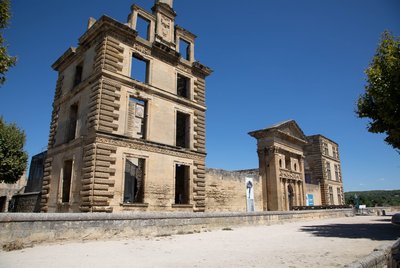
Château de La Tour-d'Aigues - ©Alain Hocquel - VPA  Patrimony and history
Patrimony and historyThe castle of the Tour-d'Aigues
From the 14th century. the castle transferred out of the medieval settlement on the present site. A castle was built in the 15th century around the first dungeon But during the 16th century, the castle and gardens were extensively reworked and expanded to become one of the finest Renaissance buildings in Provence. It was unfortunately looted and burned during the Revolution. The few remains were gradually restored since the 19th century, but nevertheless testify to this rich history.
Description
With your back to the castle and the tourist office, turn right on the Boulevard de la République (D956). 180m later, turn left into a protected passage (bike sign "Liaison La-Tour-d'Aigues-Saint-Martin-de-la-Brasque"). Go past the college. At the next roundabout, turn right into Chemin du Piedmont. Further down, reach the D120 and take a right for 200m.
1- At the intersection, turn right towards Saint-Martin-de-La Brasque (D165). At the Y, stay on the left. At the entrance of the village, turn right and go through the large car park. At the corner of the town hall, turn left and proceed straight until the D27.
2- Turn right, leave on the left the bike route "Autour du Luberon", and continue the D27 until the foot of the village of Grambois. Before the stop, turn left (signposted "Pays d'Aiguesà vélo"), take the D856 then turn right at the roundabout (D122). Cross the bridge over the Eze, climb the winding path and reach the top of Grambois. At the roundabout, turn right towards Beaumont-de-Pertuis. At the Y continue on the left the D122) for 4km.
3- Turn right towards Beaumont-de-Pertuis (stretch of D42 common with the cycle route "Autour du Luberon").
4- At the intersection, leave on the left the cycle route "Autour du Luberon" and continue right towards the center of Beaumont-de-Pertuis (D42). Facing the town hall, turn right. Follow the road to Mirabeau (D198). Go past ND de Beauvoir, turn, and continue until Mirabeau.
5- At the foot of Mirabeau, just after the tennis courts, turn right twice and follow the road to La Tour-d'Aigues (D135). Farther, turn twice to the left and once to the right, then slip to La Tour-d'Aigues (D135).
6- At the height of ND de Ferrage, leave the road "Le Pays d'Aigues à vélo" which goes left towards La Bastidonne, continue right. Just after the bridge over the Eze, turn right. Cross the street on the left, climb the rue des Remparts and go right to the castle.
- Departure : Tourist office, Place Jean Jaurès, La-Tour-d'Aigues
- Arrival : La Tour-d'Aigues
- Towns crossed : La Tour-d'Aigues, Saint-Martin-de-la-Brasque, Peypin-d'Aigues, Grambois, Beaumont-de-Pertuis, and Mirabeau
Forecast
Altimetric profile
Recommandations
This route follows streets opened to public traffic; so under all circumstances, it is therefore essential to respect the highway code. Wearing a helmet is highly recommended, for children as well as for adults!
For the more athletic ones: from the point 6 at the entrance of La Tour d'Aigues, it is possible to follow the Western route of the "Le pays d'Aigues by bike" route (totaling 105km).
Information desks
House of the Luberon Regional Nature Park
60, place Jean Jaurès, 84400 Apt
In the heart the old town centre of Apt, the House of the Luberon Regional Nature Park welcomes you in a town house of the 18th century. The permanent exhibition of the geology museum has a rich collection of fossils evidencing the geological history of the Luberon.
On sale at the shop: books, maps, guidebooks, games, posters...
Open Monday to Friday from 8:30 am to 12:00 pm and from 1:30 pm to 6 pm (and on Saturday, depending on the program). Free admission.
OTI Luberon Sud Tourisme
Le Château - BP 16, 84240 La Tour d'Aigues
Access and parking
At 30km North of Aix-en-Provence, through the A51, D973 and D956.
Parking :
Access
- Emergency number :
- 114
Source
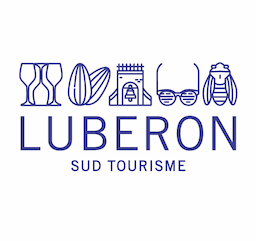

Report a problem or an error
If you have found an error on this page or if you have noticed any problems during your hike, please report them to us here:


